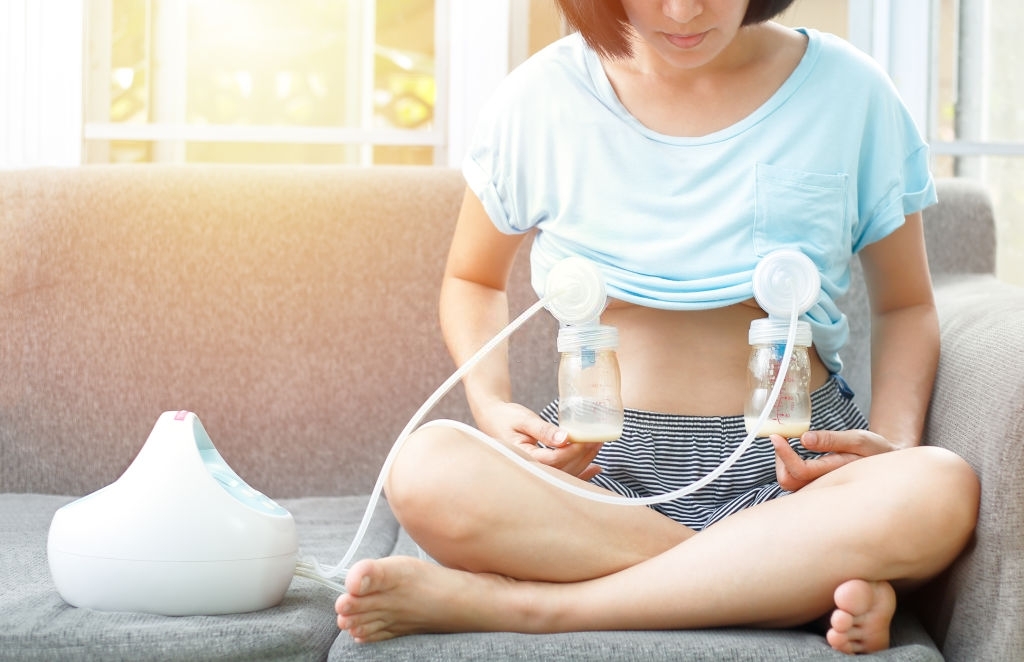The most common side effects of breast pumping include mastitis, plugged ducts, cracked nipples, and breast tissue damages, among others.
If you have cracked nipples, it is best to wear a lightweight bra or hold the nipples with a warm compress for about 10 minutes daily.
A good remedy for cracked nipples is to apply a few drops of coconut oil on the nipple area once or twice daily. This will help heal the damaged area and prevent further damage. Coconut oil is also very good for skin moisturizing purposes, so you can apply this oil to the nipple area after each pumping session.
Mastitis: Mastitis is an inflammation of the breast tissue that can develop from early pregnancy, It can be caused by breastfeeding and pumping too much milk at once. It can also occur in women who have had a previous breast cancer surgery.
Symptoms include painful breasts, fever, chills, fatigue, loss of appetite, and nausea.
To treat mastitis, you must stop breastfeeding immediately and use antibiotics or antifungal medications prescribed by your doctor to treat mastitis quickly before it spreads to other parts of your body like the armpit where it cannot be treated easily with medication.
Plugged ducts: Plugged ducts are caused by engorgement while breast pumping which causes excess milk buildup inside the ducts.
Is pumping milk harmful?
Pumping milk is not harmful if you are using a breast pump of good quality. Some women may experience pain or discomfort while pumping, but that can be alleviated with appropriate positioning and latching technique.
The most common causes of problems include improper latch-on style, too much pressure on the nipple during suctioning (this occurs when the flange doesn’t fit properly), or incorrect settings for speed/volume levels in your machine.
What is the best Breast Pump?
The best breast pumps on the market today are Medela Pump in Style Advanced, Spectra S1, Ameda Purely Yours, Spectra S2.
These products have great features and come with many accessories.
The Spectra S2 has a dual-hook system that allows you to attach both breasts at the same time thus pumping more milk at once.
How much milk can I pump?
The amount of milk you can pump depends on your body’s ability to produce milk and the baby’s need for milk.
You will know how much milk to pump in order to satisfy your baby’s needs by consulting with your doctor or lactation consultant before starting breastfeeding.
It is recommended that you do not exceed more than 20% of your total daily intake of calories per day because excess weight gain is often associated with excessive nursing and overfeeding during the weaning period.
Can pumping damage Milk Ducts?
No, pumping does not damage the milk ducts. However, it may cause excess milk to build up in the ducts and cause plugged ducts. Plugged ducts are caused by engorgement while breast pumping which causes excess milk buildup inside the ducts.
Can breast milk pumps ruin Nipples?
Breast milk pumping does not ruin nipples but it can cause soreness that may last for a few days. Breastfeeding is the natural way to feed your baby and breast pumps have made this process easier than ever before.
Does pumping ruin the shape of the Breast?
Breast milk pumping does not damage your breast’s shape. Breastfeeding is a natural process that can be done during the day or night.
It might take some time for you to get used to doing this on a regular basis.
Read also: How to Correctly use a Breast Pump for Beginners
To avoid any discomfort while breastfeeding, pump slowly at first so you don’t overstimulate the nipple with too much suction from the beginning until you’re comfortable enough with how fast and hard it should go in order to produce milk.
How long can I pump?
You can pump as long as you want. The duration of pumping will depend on your baby’s needs and how much milk you are producing at that time.
Some mothers produce a lot of milk from the beginning and continue pumping for several months while others produce less milk from the beginning but continue to pump for several days until their supply is depleted.
Conclusion
Side effects of breast pumping are common, especially for mothers who pump for more than a few days. The most common side effect is sore nipples.
Your breasts may feel full and heavy because of the extra milk that you are producing. This feeling can last several hours after your pumping session has ended. You may also experience some minor swelling in your breasts which will subside within a couple of hours.
The pain during and after pumping can be extremely intense due to the amount of pressure that is exerted on the breast skin during the session.
It can be difficult to sleep at night since your breasts remain engorged and full of milk even after you have stopped pumping
In rare cases, some mothers report experiencing cracked or bleeding nipples.
Reference:

